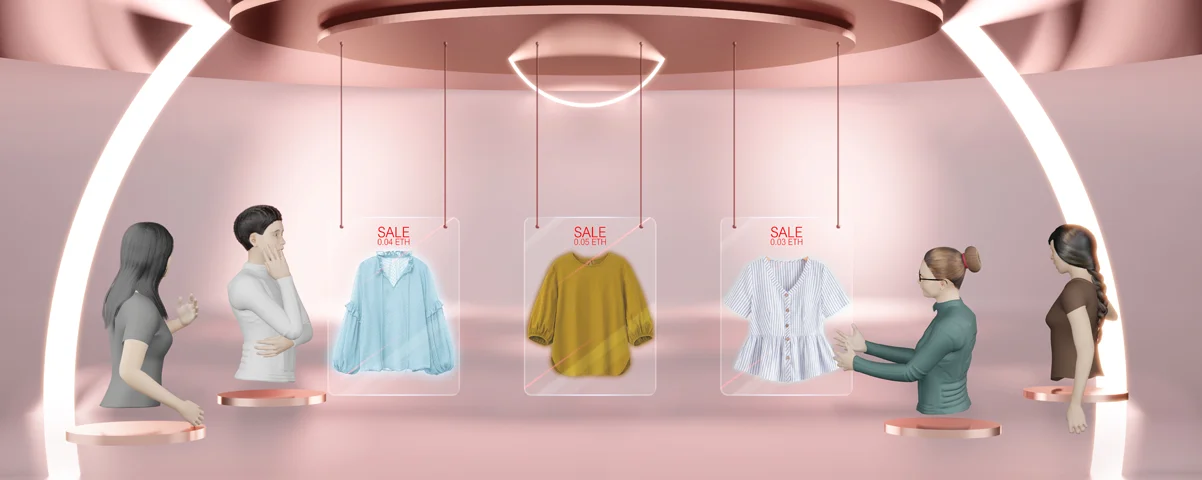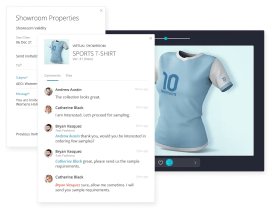What is the WFX Virtual Showroom and what it can do for your business
Introduction
In today’s world, many fashion companies are choosing to market their products entirely digitally. While e-commerce, social commerce, live shopping, and other developments have long made it easy for brands and retailers to reach customers digitally, the most recent advancement is the ‘immersive virtual showroom’—that’s luring eyeballs and sales for fashion brands.
A digital or virtual showroom is a platform that lets you display and sell products, as well as engage your customers online.
Virtual Showrooms have become a popular way for fashion brands and manufacturers to replace physical showrooms with digital ones. In a way, virtual showrooms are the best of both worlds. They allow customers to view your collection, experience your vision, discuss design iterations, place orders within the platform AND you don’t have to pay for a physical location or manpower to make it happen.
You might have heard about 3D virtual showrooms that use AR/VR technologies to create physical spaces in a digital environment (just like in video games). These showrooms are meant to engage customers through an immersive experience. Well, now it’s time to bring this level of sophisticated technological innovation to the B2B space.
To read more about how virtual showrooms are revolutionizing the world of B2B sales, check out this article!
While the pandemic crippled the sales of many fashion brands, they at least had a fallback option with robust digital shopping infrastructures that compensated for the fall in physical sales.
While ecommerce allowed consumers to keep shopping from their favorite fashion brands, things were not so easy for B2B brands and manufacturers, who make these clothes. As the world switches to hybrid mode, it’s important to create effective virtual B2B sales channels for the fashion industry.
Why WFX built a B2B virtual showroom
As a market leader in building solutions for the fashion industry, WFX helped address a multitude of problems in fashion manufacturing through features like enhanced reporting, improved inventory management and real-time financial data consolidation in real-time through WFX ERP. Then, our team made things easier for fashion brands by solving problems such as high costs, quality assurance, low productivity, and slow lead times with WFX PLM. Now, it’s time for us to tackle the world of B2B sales with WFX Virtual Showroom.
When restrictions on travel and in-person meetings became too much to bear, manufacturers turned to video call meetings. But long-winded discussions about technical drawings, catalogs, illustrations, trims, materials and accessories aren’t as easy to follow over a live stream. An avalanche of verbal feedback and haphazard annotations makes the process overwhelming. We could see that manufacturers and brands were in dire need of a different approach to help break through the wall of information and make communication easier with their respective buyers.
After listening to our customers, we concluded that a B2B Virtual Showroom would solve a lot of these problems. And that’s how we launch our all-new WFX Virtual Showroom—a secure and easy way to promote, share and sell your designs to prospective buyers anywhere in the world.
To make it even easier, we’ve made the whole process interactive. You can create and present designs in 2D and 3D formats, protect confidential information, manage every design inspiration for future reference, and even integrate all of these processes with your PLM/ERP system.
What’s different about the WFX Virtual Showroom
With a click of a button you can reach millions of new customers, show new (or classic!) collections to prospective buyers and launch online sales campaigns—no more looking for agents, locations, showroom space to expand your business overseas.
You can use the WFX Virtual Showroom to harness the power of 3D to show off your designs to your buyers from every angle. You can let them get up close and personal with your designs by letting them zoom in, rotate, and drag around your 2D and 3D displays.
Through advanced commenting and in-built messaging tools, you can answer any questions that your buyers may have through our easy-to-use and centralized communication system.
You can track every movement and click in the virtual showroom (something that’s just not possible within a physical showroom setting. You can keep track of important engagement with metrics such as ‘click through rates’, ‘browse through rates’, ‘enquiry and sample hit rates’ and so on to plan your collections better.
Above all, you get peace of mind—knowing that your designs are protected from illicit copying and duplication before they even hit the shelves. WFX Virtual Showrooms come with cybersecurity measures like sharing via secure links, invitation-only access, and one-on-one messaging boards.
Features & Functionalities of the WFX Virtual Showroom
A regular ecommerce website will let you showcase, sell, and share your collection with customers. WFX Virtual Showroom takes it a step further. With WFX Virtual Showroom, you can:
- Manage inspiration
- Build and customize collections
- Design a personalized showroom
- Run email promotion campaigns
- Share products via secure link
- Gain insight through analytics
- Use data to improve future collections
Let’s delve deeper into some of the key features of WFX Virtual Showroom:
1. Design collections – It’s a snap to add detailed attributes, measurement charts, Tech Packs, illustrations, and multiple pictures to your product pages. You can even pull collection information directly from the WFX PLM and customize wherever needed.
2. Manage inspirations – Centralize your mood boards, design inspiration, ideas, and communications on one platform.
3. Easy collaboration – Working with two or more teams on different collections is easy and efficient. Get feedback on products, iterate on designs with buyers and receive orders all on the same platform.
4. Customize your virtual showroom – Design a beautiful virtual store with the easy-to-use templates and give it the look that you want to portray. Add any customized features to entice your prospective customers, like exclusive discounts, bundle orders and more!
5. Launch sales promotion – You can boost the sales of your in-house designs by running digital campaigns to reach more people, through email newsletters, digital advertisements, and sharing secure links via social media.
6. Promotion Analytics – Monitor metrics like click-throughs, inquiry rates, and hit rates to refine your efforts. Save money and resources by eliminating underwhelming collections. Prioritize product sampling for high-demand designs. This will help you make better design decisions for the next season.
Conclusion
Technological trends in fashion are just as important as the latest fashion trends. Just look at what a significant role technology plays in the world of sustainable and fast fashion right now!
Hermès couldn’t have made leather-free products if it hadn’t been for the invention of biodegradable mushroom leather and other alternative materials. Without CAD, 3D design and PLM software, the fast-fashion revolution wouldn’t have been possible. The newly affordable CAD and 3D design software allowed designers to make small changes quickly, while PLM and ERP apparel management software dramatically cut production time and cost to enable a much faster supply chain.
The best fashion businesses know that technology plays a huge role in new fashion trends. Every new trend is made possible by technological innovation in fashion, which means that fashion businesses have to stay on top of both the fashion and technology trends.
If you want to learn more about how the WFX Virtual Showroom works and whether it’s the right choice for your business, send us a message and we’ll be in touch!







